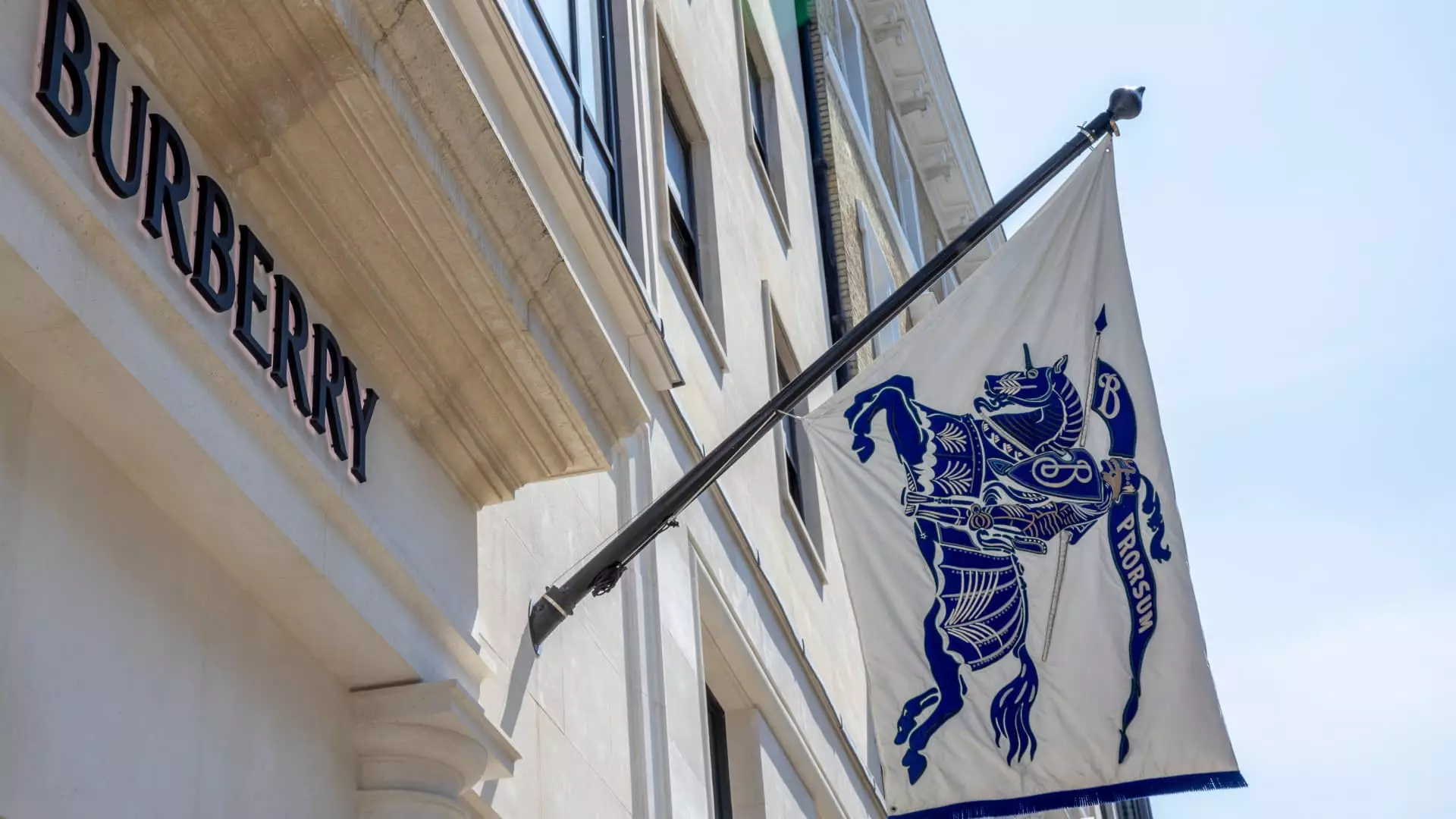Burberry, once a paragon of British luxury, is grappling with the reality that its glory days are not just behind but are currently teetering on the edge of obscurity. The recent announcement of significant organizational changes, which could potentially affect around 1,700 employees globally by 2027, underscores a desperate response to declining sales figures. The company’s proactive measures, while necessary, raise troubling questions about the true cost of such a turnaround effort—both in human and cultural terms. It is a sobering reminder that even illustrious brands are vulnerable to the whims of market fluctuations and consumer sentiment.
A Mirage of Recovery
Despite sales figures that fell slightly less than analysts had predicted, Burberry’s revenue for the fiscal year still shows a decline. A decrease of 12%, with only a marginally better performance than anticipated, reflects a troubling trend rather than a confident forward trajectory. The fashion industry is notoriously fickle, and while analysts had hoped for something more reliable from Burberry, the brand’s recent boasts about robust performance in the Americas turned into a sharp turn of fortune with a 4% loss—an alarming indicator of instability within their consumer base. The lack of consistent sales across all regions signals that the turnaround may not just be a passing storm but something more deeply ingrained.
The Geopolitical Elephant in the Room
The current geopolitical climate, particularly with rising tensions and evolving tariffs, casts a long shadow over Burberry’s recovery narrative. It is disheartening, yet expected, that a business with such a pedigree would cite external factors—global strife and economic uncertainty—as significant roadblocks to success. CEO Joshua Schulman’s optimism, while commendable, glosses over these tangible obstacles that can derail even the most well-laid plans. The insistence on a brighter future feels almost like a corporate mantra, but it lacks the substance that shareholders and employees alike desperately need to hear.
What Lies Ahead?
Are Burberry’s best days truly ahead, as Schulman claims? Or are we looking at a façade of optimism built upon shaky foundations? The company’s continued navigation through treacherous waters begs for a more authentic approach—one that prioritizes genuine connection with its customer base over merely existing in historical prestige. A luxury brand can no longer afford to rest on the laurels of its heritage while failing to evolve with consumer needs in a volatile market. The challenge for Burberry is monumental; success already feels like a distant dream, and the prospects for sustainable growth hinge not just on numbers, but on re-establishing a meaningful relationship with the modern consumer.
As Burberry embarks on this challenging path, the stakes have never been higher. The luxury fashion market demands not only aesthetic innovation but also a profound understanding of its cultural relevance. Whether Burberry can pivot from precariousness to re-ascension will ultimately depend on how well it adapts to change—an endeavor that requires more than just structural reorganization; it requires a deep commitment to evolving with integrity and purpose.

